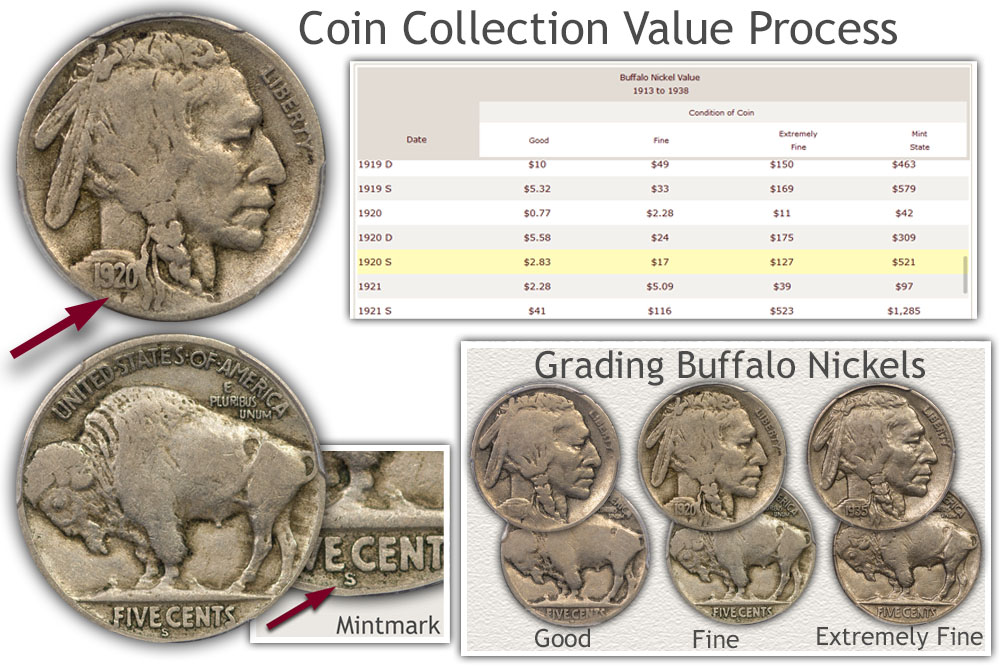

1909-S Indian Cent: $300 to $1,000+ Image: USA CoinBook The lowest-mintage circulation strike of the Indian cent series is the 1909-S, which was struck to the tune of just 309,000 pieces. For …Halfpenny 1930, Coin from Australia - Online Coin Club Coins Database Coins from Australia Type: Halfpenny - Commonwealth of Australia Halfpenny 1930 Halfpenny 1930, Coin from Australia - detailed information Halfpenny 1930, Coin from Australia (withdrawn 1966) Halfpenny 1930: Known varieties Halfpenny 1930: References to Information Used Still, uncirculated condition (mint state) pennies have the highest average values.
Rare coin values chart update#
Prices in GBP £ Circlated Uncirculated View the average prices of certified Half Penny 1930 sold at auctions » Mintage Half Penny 1930 : n/a Last update : Sunday, FebruRight now on EbayThe average value for a 1930 penny in about uncirculated condition (AU-50) is about $4. The value of a Half Penny 1930 british coin depends on several factors such as quality and wear, supply and demand, rarity, finish and more. 1920-D penny (Denver mint) - A 1920-D penny is worth 20 cents to $2 in well-worn condition and $70 to $250 for chocolate-brown specimens in typical. Red mint state pieces range in value from $100 to nearly $10,000. There are no reports of collectors finding these in circulation.1930 penny value 1920 no mintmark penny (Philadelphia mint) - Values range from 15 cents to $1 in well-worn condition and $20 to $40 in typical uncirculated grades with chocolate-brown toning. Many collectors who purchased the original coins in ICG holders eventually submitted them to be graded and encapsulated into PCGS or NGC holders. He had all of them crossed-over into PCGS encapsulated holders and release them into the market through a variety of coin dealers. In 2010, Kentucky coin dealer Jeff Garrett, owner of Mid-American Rare Coin Gallery in Lexington purchased the remaining 2,000 coins. She immediately offered 3,000 of the coins for sale at $200 each.

However, ICG did not grade the coins, but the encapsulation did preserve their provenance as one of the original 5,000 pieces presented to Goodacre. She had all 5,000 coins encapsulated and certified by Independent Coin Grading Company (ICG). The United States Mint struck them on burnished planchets that gave them a proof-like or "Specimen" appearance.

The dollars provided to her were different from the coins that were minted for regular circulation. Goodacre requested that her fee be delivered in Sacagawea dollars to her studio in Santa Fe, New Mexico. Glenna Goodacre's artistic rendering of Sacagawea won the $5,000 commission awarded by the United States Mint. Look for sharp and crisp details in the eagle's tail feathers to identify this rare variety.Ģ000-P Goodacre Presentation Specimens in ICG and PCGS Holders

However, it wasn't until 2005 that coin collector Pat Braddick noticed the difference between a regularly issued Sacagawea dollar and the ones placed in Cheerios' boxes. They advertised a "treasure hunt" and that one in every 2000 boxes of Cheerios would contain the new Sacajawea dollar. General Mills then packaged these dollars in specially marked boxes of Cheerios. This prototype reverse varied slightly from the production coin die used to make the rest of the dollars in 2000. However, the mint used a prototype reverse to produce these dollars. As a result, the United States Mint produced 5,500 Sacagawea dollars in August or September 1999.Īlthough the dollars were minted in 1999, they were dated with a 2000-P obverse. One of the companies was General Mills, Inc., the Minneapolis, Minnesota manufacturer of breakfast cereals and other food products. To market the coins and encourage the public to use them, they partnered with several commercial businesses to promote the use of the new coins. In 1999, the United States Mint began to produce the Sacagawea dollars.


 0 kommentar(er)
0 kommentar(er)
